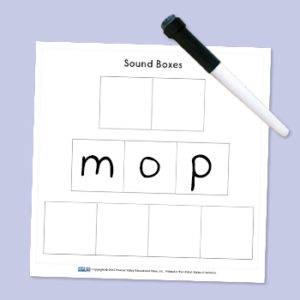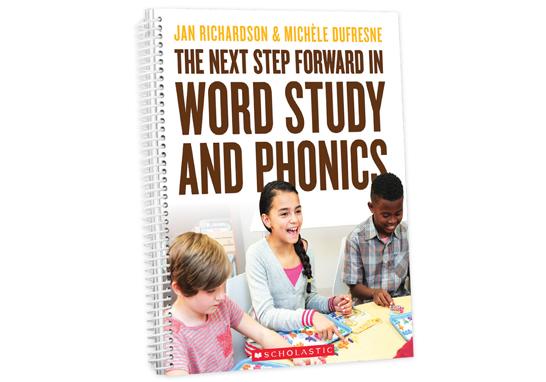Word study is an important but very brief part of a guided reading lesson.
In November, Jan Richardson and I hosted our first webinar, where we attempted to answer a range of questions about word study. It has been posted here if you haven’t had a chance to watch it!
We had many questions we couldn’t get to, so I’ve picked a few to answer here.
Erin’s question:
I have a kindergartener who speaks Chinese in the home. She has mastered her letter names when tracing but is struggling with picking up sounds. Any recommendations on how to support her in this learning?
Children beginning to learn English as a second language may experience more challenges with the word study part of the lesson. As you know, Chinese is a very different system from our English system. Can your student hear the sound but not identify which letter it is? Doing more lessons with picture sorting will help. Also, students can get confused if in the classroom the teacher uses an ABC chart with one set of pictures and then in an intervention setting uses a chart with a different set of pictures. Pick one and stick to it: A-apple or A-alligator, but not both!
Is your student having a hard time hearing the sounds in words? Sound boxes provide a very powerful scaffold. Step one is to learn to say the word slowly. If your student needs help, add counters and have your student push them up into the box instead of under the box. If you need to, tell your student what the letter is, and have them write it in the box. Now have them repeat it, saying the word slowly as they run their finger under (or across) the boxes, so they can see what the sounds look like.
Maybe your student comes to a word they don’t know in the text. We want them to make the first sound and reread. Using a simple Level A or B book, demonstrate for your student with the following prompt: Make the first sound and try it again. Now observe. The next time they read the book, do they attempt to use this strategy? Don’t be discouraged if it takes more time.
Most importantly, make sure your student has opportunities to read and write every day. The Beginner Steps lessons in Literacy Footprints provide wonderful books and planned lessons that work really well for ELL kids (found in the LFP Kindergarten Kit and the LFP Intervention Partner Kit).
Amber asks:
What is your suggestion for teaching advanced kindergarten readers who read fluently at higher levels but need word work or help writing at an emergent level?
It is not surprising that high-progress readers do not have matching skills in word work and writing. You can adapt your lessons so you are providing them with text at their instructional level, but plan word study (and writing) activities that better match what they need for instruction. High-progress readers often are VERY strong language users and use meaning and language structure to read, paying little attention to the finer details of the print. Use the emergent word study lessons and plan dictated sentences for writing that will allow them to practice the skills you taught in word study.
Amy asks:
What are your thoughts on decodable texts—are there any good ones?
I have been reading publications by various people I really respect who recommend that after teaching a phonics skill, students need to “practice” it while reading decodable text. I disagree most adamantly! I have successfully taught some of the most challenging kids to read and have never used a decodable text in my life. To my knowledge, there has been no scientific research study with data that proves this works! (For those of you who disagree, see page 297 of the National Reading Panel’s report.)
Reading is a language-based process. Students cannot develop an efficient processing system when we take away any semblance of meaning and natural syntax. Yes, we can force them to sound out a word. But the research is clear: good readers rarely sound out words letter by letter. And when reading decodable text, we prevent our young learners from learning a crucial skill necessary to becoming proficient readers—monitoring. How do they know if they got it right when the reading does not make sense? And why would any pig sit in a pit?
If you are interested in learning more about word study, in our new book The Next Step Forward in Word Study and Phonics, Jan Richardson and I describe at length and provide video demonstrations of lessons that include powerful word study procedures you can use during guided reading.
We will be hosting another webinar at 7:00PM ET on December 16. Jan and I will both be live at the Pioneer Valley office in Northampton, Massachusetts. We are going to talk about teaching comprehension during guided reading.



